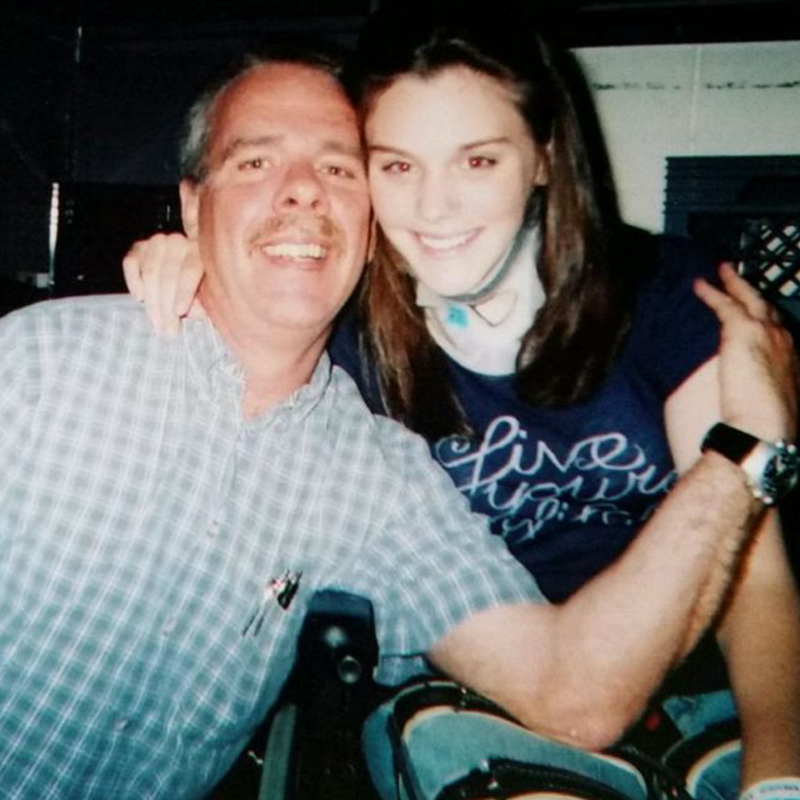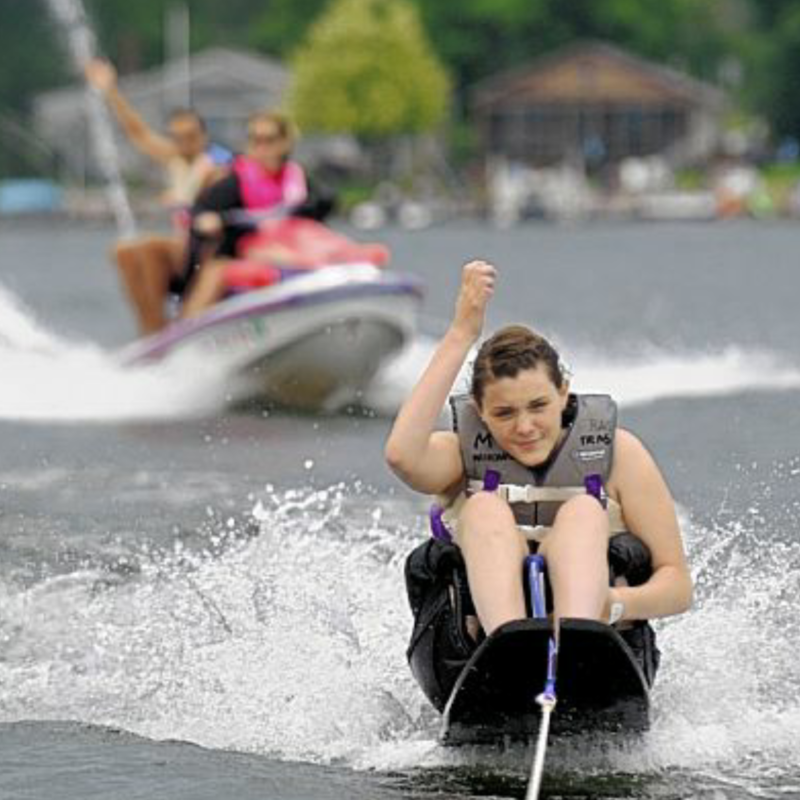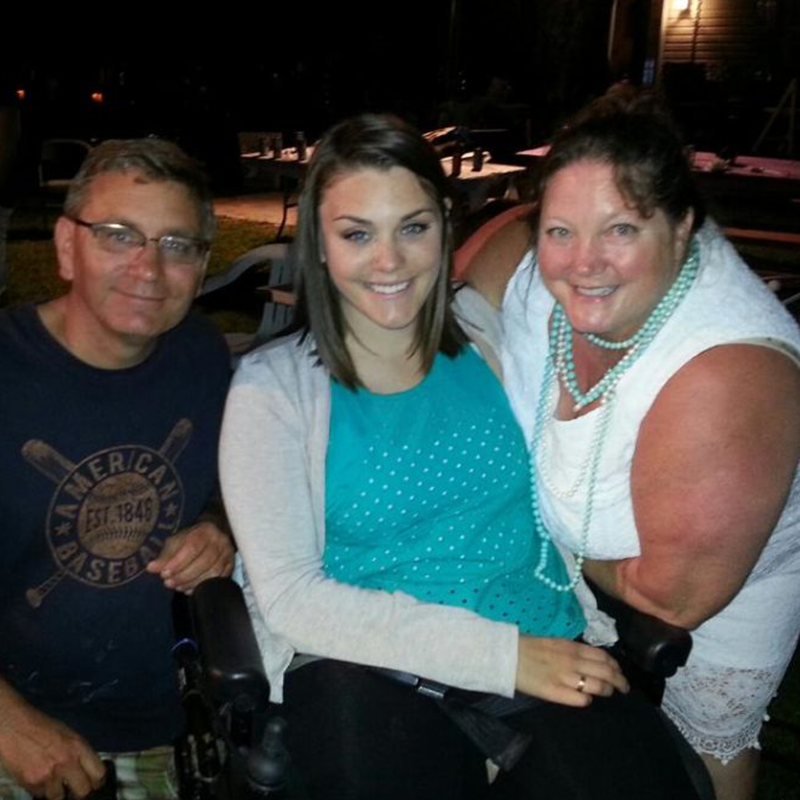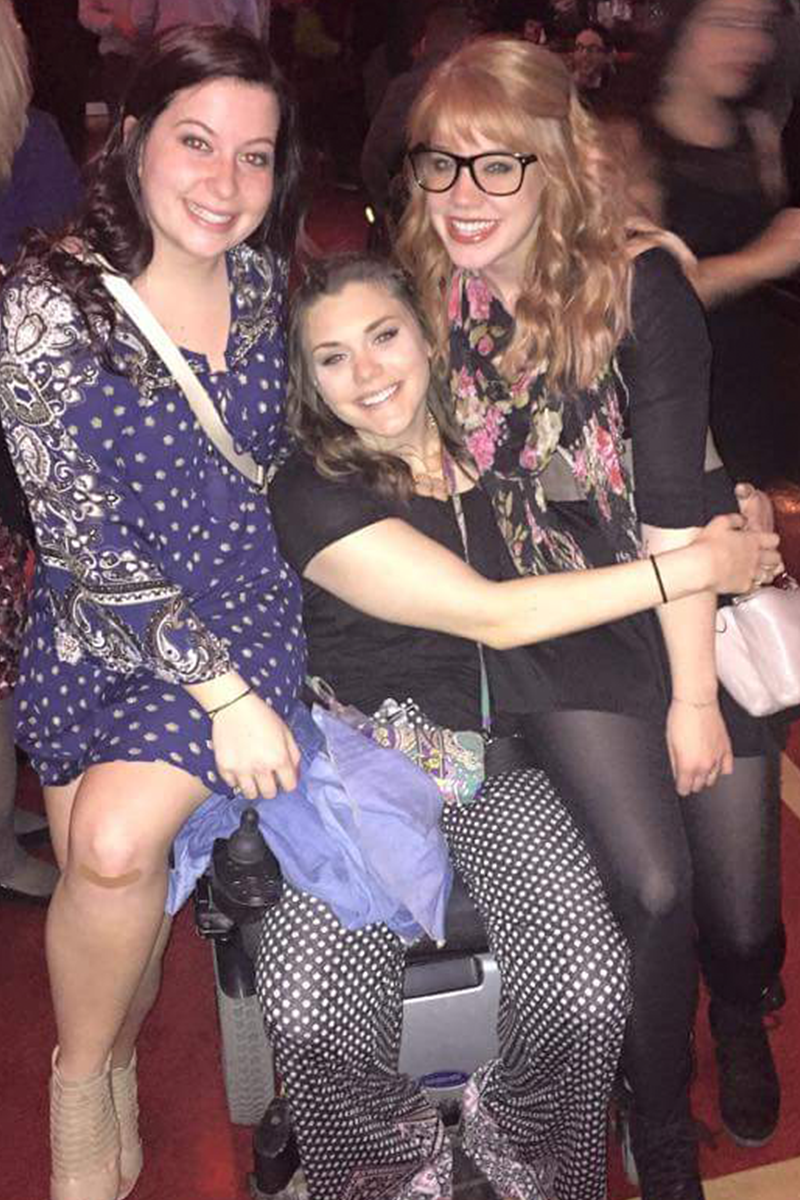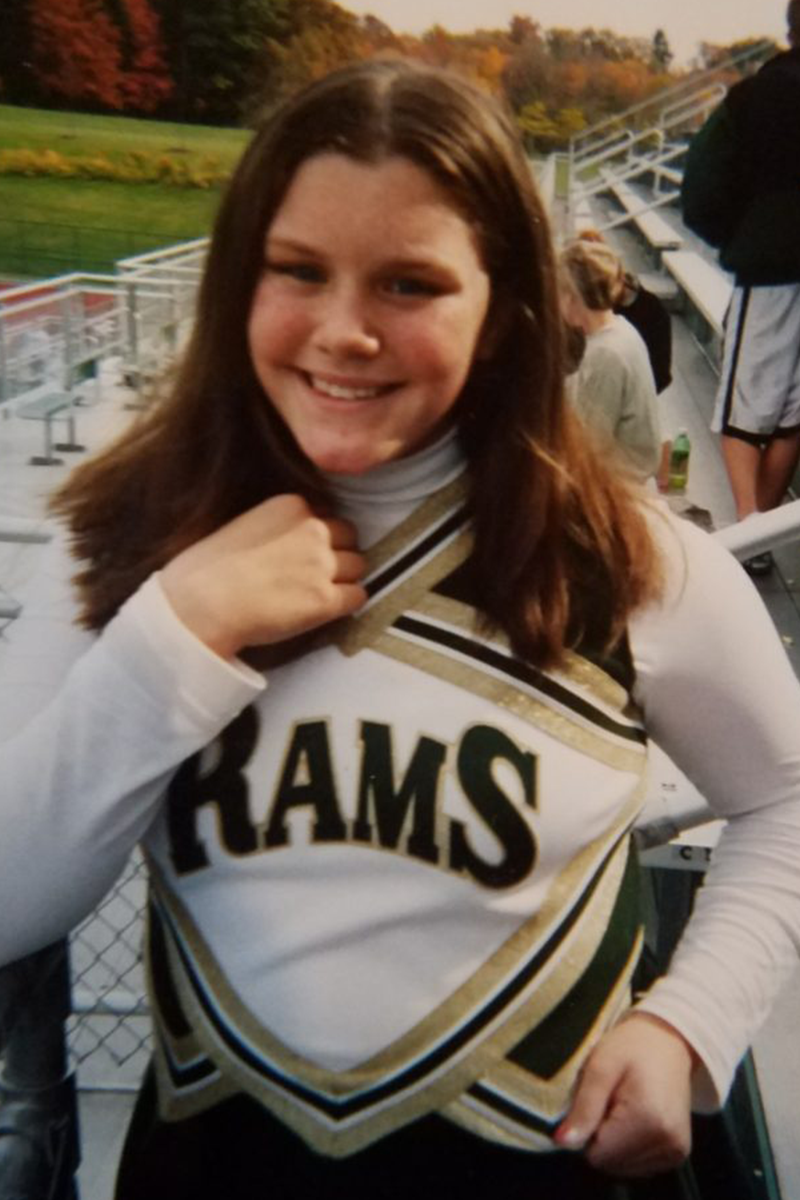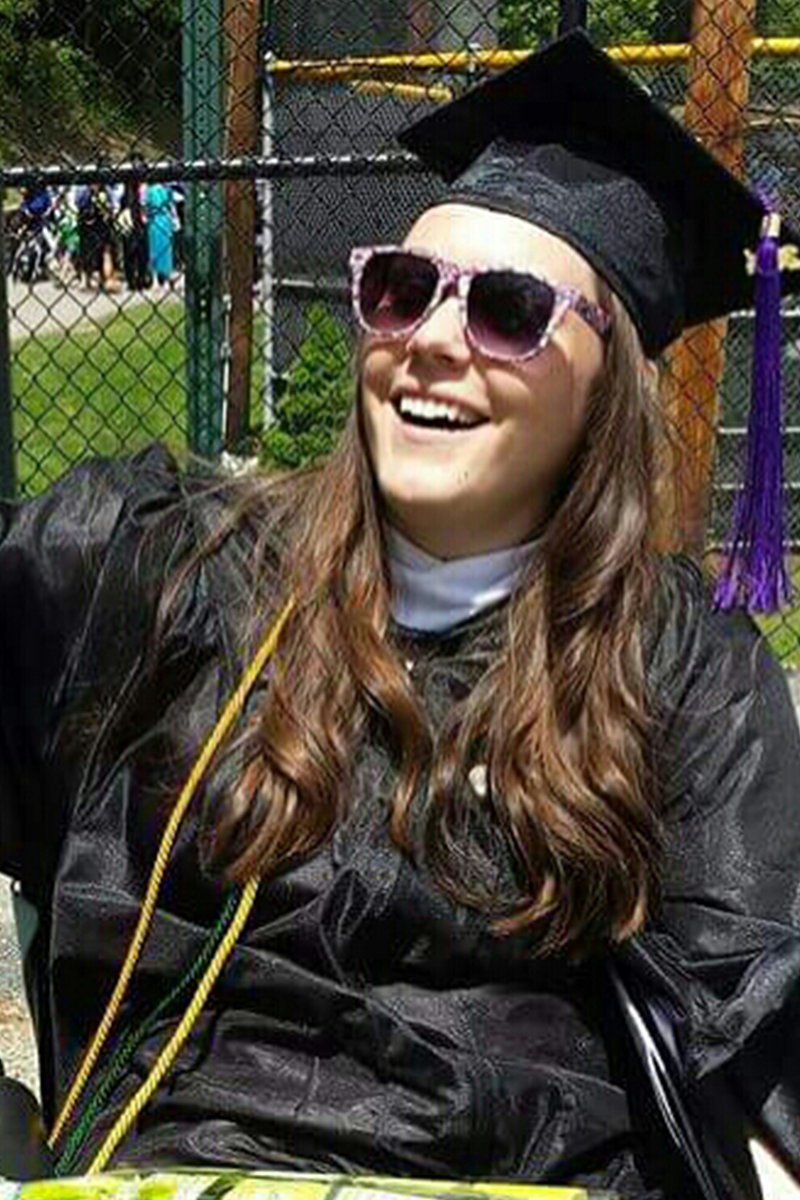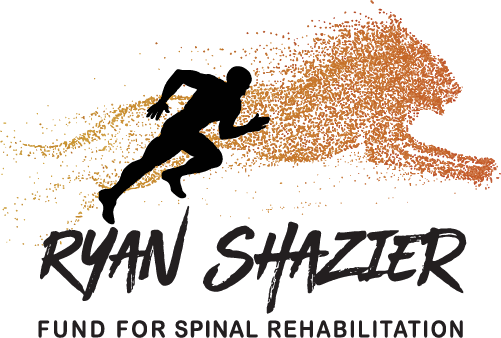Claire Senita became wheelchair-bound in 8th grade. That didn’t stop her from moving forward with purpose.
Claire Senita was 14 years old and was warming up for a tumbling/gymnastics class, laughing along with her 8th grade friends. “It was a recreational class; we were there to have fun,” says Senita. Senita stepped up to the mat and performed a forward roll, something she had done many times. But this time, everything went numb. Claire Senita had broken her neck at the C5/C6 level. “I thought that I was going to be OK,” Senita says. “Sure, I was a little worried, but I told my friends I’d be in school in a few days, and even told them to hand in my homework!”
A New Path
Senita never returned to 8th grade. The date was May 9, 2006. Senita originally was paralyzed from the neck down, with an incomplete spinal cord injury at the C5/C6 level. “At first, I couldn’t feel anything,” she recalls. “It was a few months after the surgery when I started move my arms a little bit.” After emergency surgery at Children’s Hospital, Senita traded a tumbling mat for three months of physical therapy mats and occupational therapy sessions at a Harmarville rehab clinic. “After I left rehab—remember I was 14! But there I was, and when rehab ended and I thought, ‘This just can’t be it! There must be something more!’” says Senita. “Fortunately, I could feed myself, but I still needed my mom for everything,” says Senita.
Research for Something More
Like most spinal cord injury patients, Senita and her family did the best they could with outpatient therapy. She returned to Pine-Richland High School for ninth grade and could navigate the halls in a wheelchair. But something told Senita that her journey with rehab and wellness had only just begun. At 16, Claire Senita’s sophomore year, she and her family found an activity-based rehabilitation center for those with paralysis, in Boston. “We went for a week trial,” Senita says, “and I fell in love immediately with both Boston and the center.” Senita explains that the PTs were moving her body in ways it hadn’t before. “They focused on body parts that didn’t work, trying restore function while also decreasing secondary complications.”
A Purpose is Formed
It was this short weeklong trial, combined with subsequent visits to the Boston center, where Senita formulated the next step for her young life. So, after graduating from Pine-Richland High School in 2010, Senita enrolled in Boston’s Curry College, which is a few miles from the novel physical therapy center. She earned a BS in business management and finance, with the idea that she would put this degree to good use funding and opening a similar facility in Pittsburgh. “I already knew I wanted to open an activity-based wellness center for spinal cord injuries and other paralyzed persons,” says Senita. Senita moved home to Pittsburgh after college graduation. “I had to choose between my physical well-being and my emotional well-being,” she says, “and I just missed my family a whole lot.” Senita hit the ground “rolling” after returning to Pittsburgh. She met with medical professionals at UPMC; learned the fundraising ropes and stayed in contact with the Boston facility. She and her team were able to raise enough funds to open a working fund with the The Pittsburgh Foundation in 2016.
Creating Connections
Senita talks about how, in the process of working towards the center, her own circles of support have grown. “I’m very, very fortunate. I have an incredible support system, but sometimes you need to talk with someone (in the spinal cord injury/paralysis community), who has been through what you have been through.” In addition to her work with the non-profit, Senita works part-time helping people with intellectual disabilities connect with government services to maximize their benefits. “I cannot stress how fortunate I’ve been,” says Claire Senita, “and I want to see to it that I can bring some of that good fortune to others.”
Shalieve
Wisdom
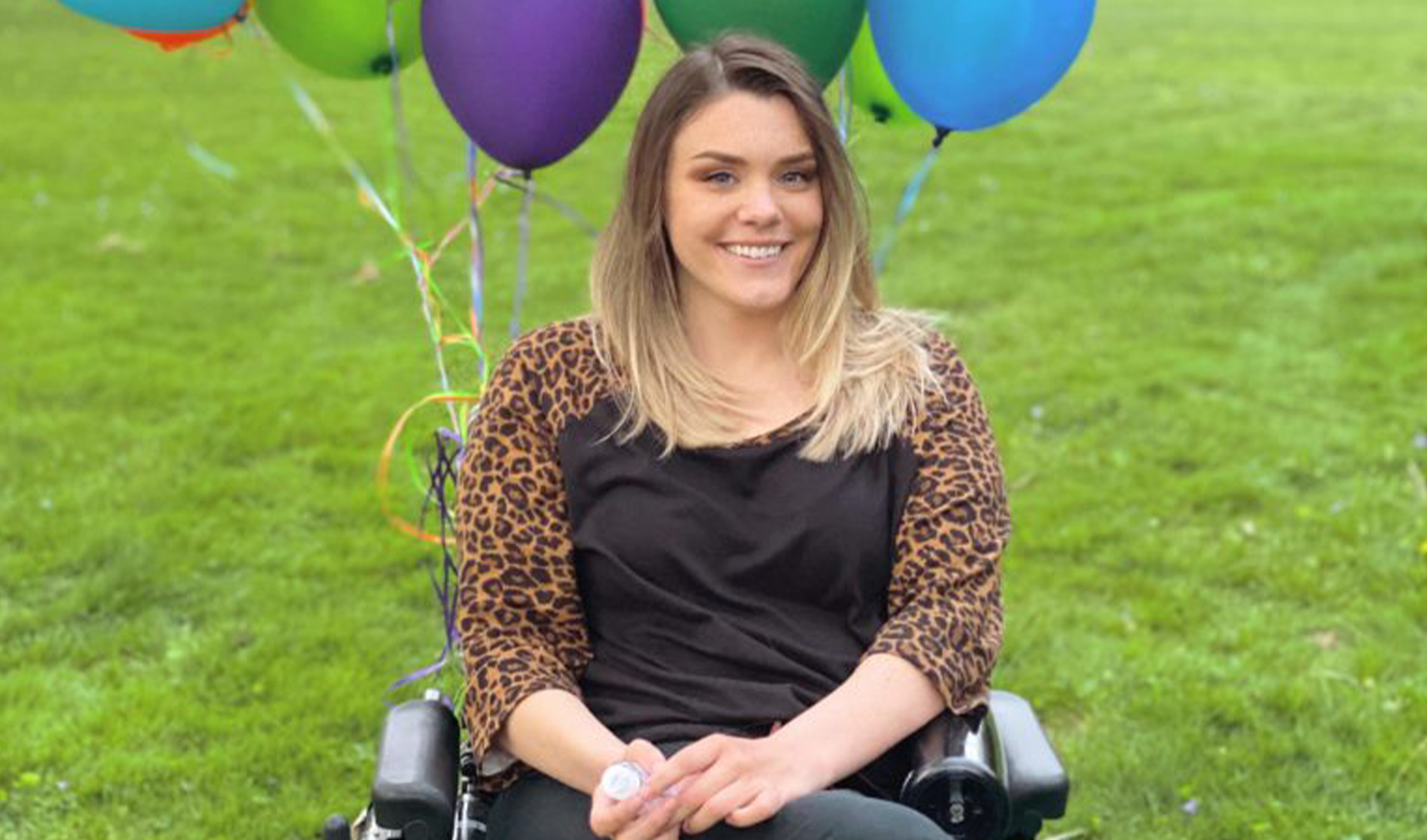
Take one moment at a time, but don't get stuck in the nitty gritty. “Take a step back and look at the big picture, the end goal and what you want in life. Don’t get frustrated with things that aren’t going to affect your big picture.
Drink more water, and other self-care activities. “Advocate for yourself--even if there are things you can't do physically, learn what's going on with your body, communicate your needs.”
Don’t get consumed by the injury. “You are still your own person. Honor that person you were before the injury and find things to do or ways to that you can reconnect with that person.

